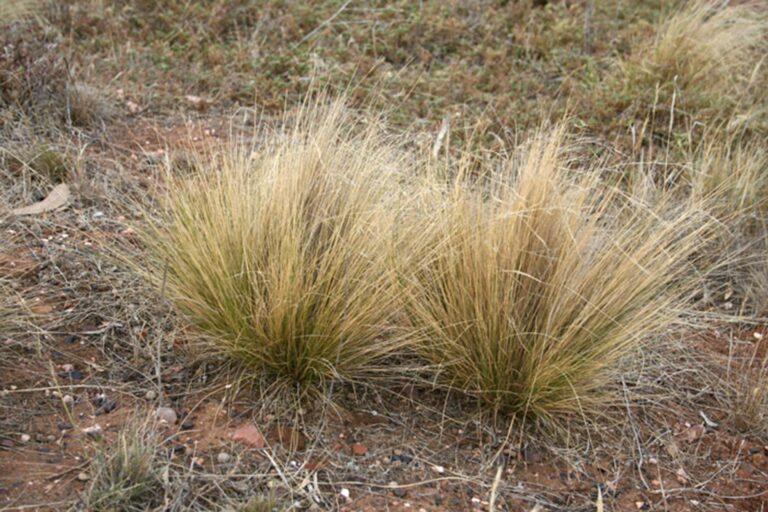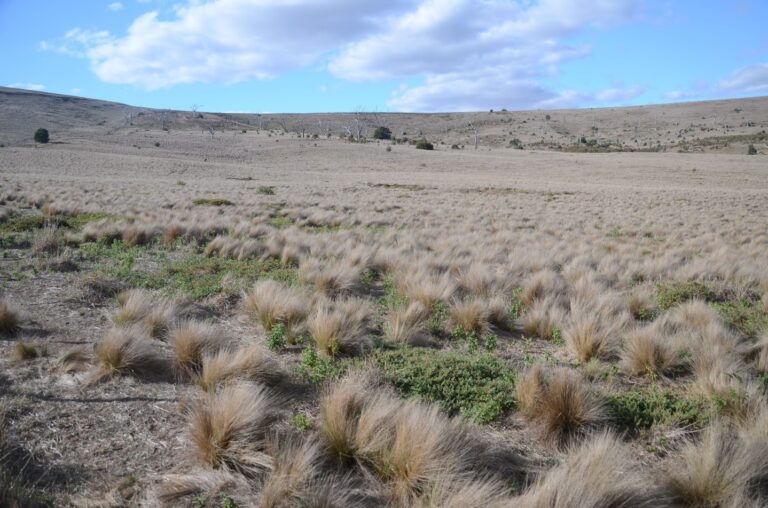Serrated tussock has infested over 250,000 hectares of land in Victoria, and has caused great damage to agriculture and native grasslands. Now is a good time to inspect your property for serrated tussock, with increased plant visibility due to frost bleaching. In frost prone areas, the tussocks are bleached a golden yellow to white colour by frost during late autumn and winter. Serrated tussock has a white leaf base, while the tips of old leaves often have a bleached tip.

The change in colour makes the plants easier to spot in a paddock, making now a good time to do a survey of your land. The recent rains and autumn break in some parts of Victoria has been good for crops, but unfortunately, also good for the growth of serrated tussock. Controlling serrated tussock before the plant goes to seed is critical to prevent further spread, lost productivity and increased control requirements.
Serrated tussock (Nassella trichotoma) is a long-lived perennial that can invade poor soils and survive fire, drought and frost. It reduces the productivity of pasture and can create a fire hazard. Its fibre content is so high that stock are unable to digest it. Seeds are spread by the wind, machinery and also by water and animals. The seed remains viable in the soil for more than 10 years and can dominate if there is no competition from other pasture species.
Depending on the size of the infestation plants can be removed manually using a hoe or spade, or spot sprayed using a registered herbicide. Small seedlings recently germinated will appear bright green until they are bleached by frost, and will be erect and stand out from the other grasses in a pasture. The Victorian Serrated Tussock Working Party (VSTWP) has a host of information on treatment options and case studies, including videos and information sheets that can be posted or emailed to landowners.

“We are asking landowners to conduct assessments of their properties before Spring, when the grass starts to flower. Serrated tussock flowerheads develop a distinctive purple colour as the seeds ripen in late spring and early summer. During winter you will be able to see the plants easily when they are bleached a lighter colour,” said VSTWP Community Engagement Officer, Ivan Carter.
The VSTWP has developed an online video and information sheets to help landowners identify the noxious weed, which can be viewed at www.serratedtussock.com.

“Serrated tussock is a costly weed to have on your property, especially when it becomes established,” Mr Carter said. “It is best to check your property for new infestations and treat plants every season before seeding” he said. “A mature serrated tussock plant can produce thousands of seeds in a season, blowing up to 20 kilometres from the parent plant.”
For further information, please contact the VSTWP on info@serratedtussock.com or visit www.serratedtussock.com .
